STRATEGY
FOCUS 3 :
Incorporating Carbon Neutrality
into Growth
The issue of climate change is not only a Materiality for us, a company that consumes a lot of electricity, but also a major business opportunity.
Based on industrial gas, our core business, we have developed over many years technologies and businesses that contribute to low-carbon and decarbonization, such as CO2 capture, hydrogen production, and methane, as well as management resources such as ties with local communities, a customer base, and a logistics network. By capitalizing on these resources with regional characteristics, our Group will work to build a “resource-recycling energy supply model of local production for local consumption” that creates clean energy from locally generated waste, and stays committed to solving social issues.
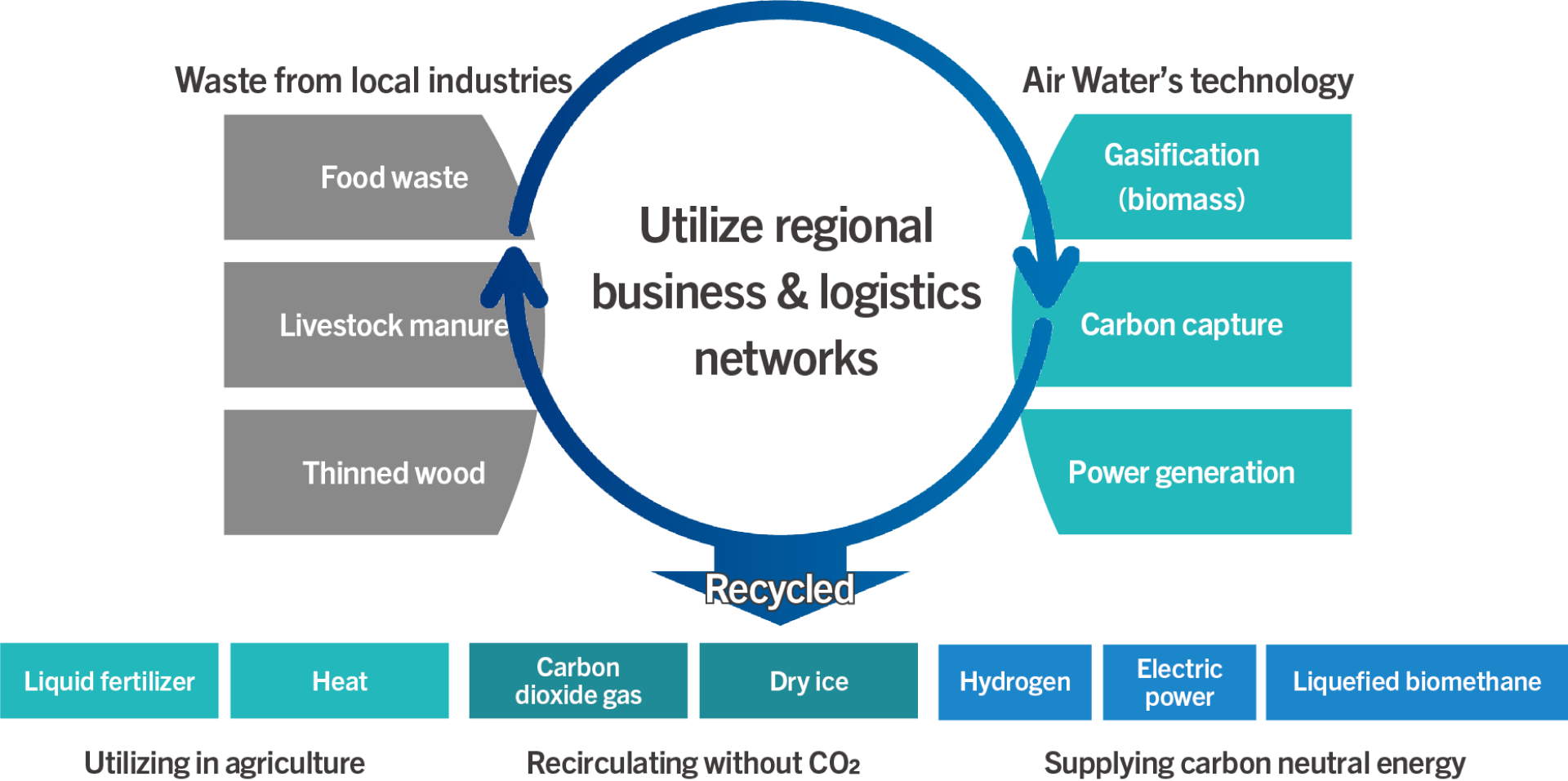
Case 1. Produce & utilize biomethane
Modeling sustainable and locally-recyclable energy supply
Our Group has been working to build a regional recycling supply chain in which unused biogas generated from livestock manure is processed into liquefied biomethane (LBM), an alternative fuel to liquefied natural gas (LNG), and consumed within the region. It is a business model that solves social issues by providing clean, sustainable, domestically produced energy in dairy farming areas, and also reducing odors and water pollution caused by livestock manure.

Marine fuel
Conducted demonstration tests of LBM as marine fuel for domestic transportation with six companies including Mitsui O.S.K. Lines. It would be an effective way to decarbonize ship operations.

Plant power, product materials
Signed an agreement to use LBM at the Obihiro Plant of Panasonic Industry Co. In FY2025, it will be used for electricity and EV relays materials to help decarbonize the plant.
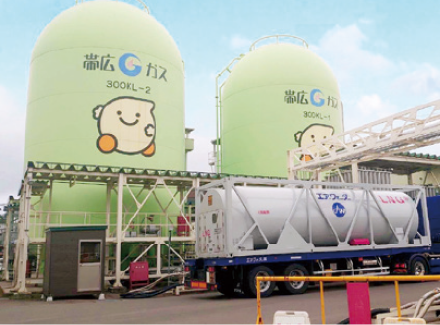
City gas (Energy for living)
We conducted a demonstration project to use LBM as an alternative fuel to LNG in the pipeline service area of Obihiro Gas Co., making the first attempt in Japan to supply LBM to city gas users.
* If the entire production is used to replace LNG, the greenhouse gas would be reduced by more than 60%.

Rocket fuel
Interstellar Technologies Inc. decided to use LBM as fuel for the satellite launch vehicle “ZERO” and started demonstration experiments at the engine combustion test facility in December 2023.
This is an initiative unique to our Group that combines our core industrial gas technology and energy business know-how with Hokkaido’s regional business infrastructure and logistics network, and is scheduled to be commercialized in FY2024. We will handle LBM as a new energy product and invest some 60 billion yen over the next 10 years to implement it in society.

Idea as an industrial gas manufacturer
We focus on dairy farmers who want to utilize biogas from livestock manure and business operators who want to introduce decarbonized energy.
Our gas-related technologies
We apply our know-how in gas collection/transportation, separation/purification, and other technologies related to the stable gas supply.
Our LNG sales infrastructure
We supply the produced LBM as CO2-free fuel to users promoting decarbonization as an alternative to LNG.
Case 2.
Use CO2 capturing technology to
create recycling society
The world has yet to establish a technology for low-cost, low-energy CO2 capture from low-concentration flue gas emitted from small- to mid-scale factories such as boilers and industrial furnaces. We made this possible with “ReCO2 STATION,” a compact CO2 recovery and utilization system. It was developed by using our proprietary adsorption separation technology, based on our long experience in gas production/engineering technology and as a manufacturer of carbon dioxide gas and dry ice. The collected CO2 can be turned into dry ice on site, and we are building a new carbon dioxide gas supply chain of the “local production for local consumption” model.
Recycling and utilization of emitted CO2

“ReCO2 STATION” is designed for use with combustion exhaust gas with a CO2 concentration of about 10% from industrial furnaces and boilers. It is also a container-sized device that can compress CO2 to produce liquefied carbon dioxide gas, which can then be solidified to produce even dry ice.
Our Group is a leading manufacturer of dry ice, which is used to cool and preserve food and other products, but in recent years, suppliers of CO2, the raw material for dry ice, are decreasing due to the closure of domestic refineries and steel mills. In the future, we plan to build a locally produced and consumed dry ice supply network which captures CO2 and produces dry ice within the region. We also promote “carbon recycling,” in which the collected CO2 is regarded as a “resource” and reused as a raw material or fuel.
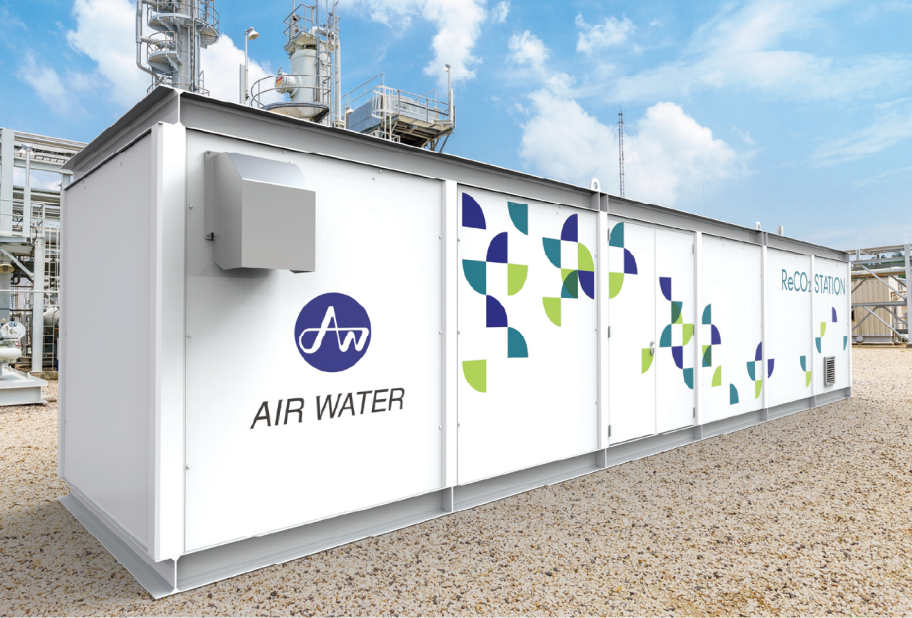
We are also developing technology to capture low-concentration CO2 at lower cost, which was adopted by the New Energy and Industrial Technology Development Organization (NEDO) for its “Green Innovation Fund Project.” We jointly research with TODA KOGYO CORP. and Saitama University on using a material called sodium ferrite (Na-Fe oxide) as a CO2 adsorbent. We aim to reduce the collection cost to 2,000 yen/t-CO2, about half the current.
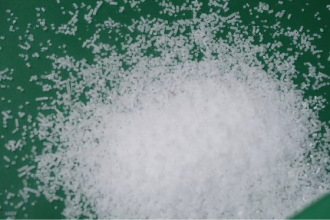
Dry ice made by this equipment
Case 3. Advance the hydrogen supply business
Using hydrogen, which does not emit CO2 during combustion, is one of the keys to decarbonization. We are taking the lead in building a hydrogen value chain in the U.S., where decarbonization-related measures are rapidly advancing, by utilizing the wealth of knowledge and technology accumulated as an industrial gas manufacturer in the production, storage, transportation, and use of hydrogen gas. At the same time, we are working with local governments and industry to contribute to carbon neutrality by utilizing our nationwide bases in Japan.
Invested in U.S. hydrogen station developer/operator
Our Group has invested in FirstElement Fuel, Inc. (FEF), the largest developer and operator of hydrogen stations in California, USA. In addition to supporting FEF’s goal of establishing a network of 80 hydrogen stations in the state by 2024, we will provide the solutions necessary to operate hydrogen stations, including liquefied hydrogen tanks and liquefied hydrogen trailers, and promote new initiatives related to the hydrogen supply chain in terms of production, sales, and distribution of liquefied hydrogen.
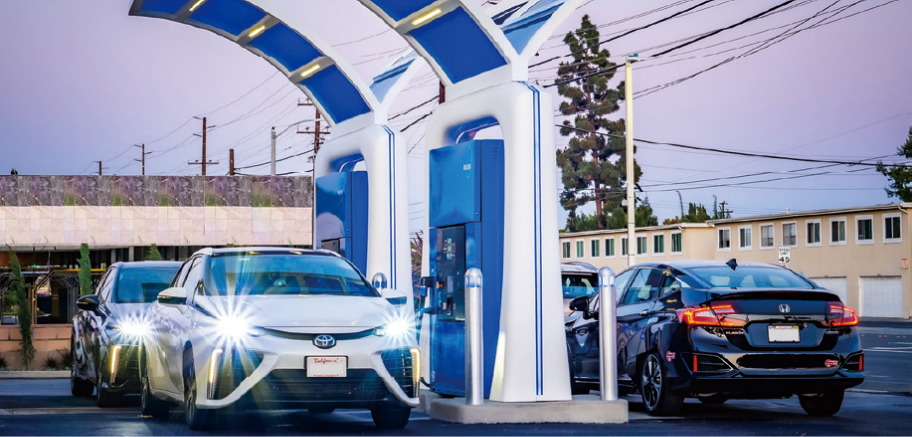
FEF’s hydrogen station
Building the onsite-based hydrogen supply chain in Japan
Our Group boasts nine on-site hydrogen gas supply sites and 11 compressed hydrogen production sites in Japan as one of the top hydrogen gas suppliers.
The “VHR” hydrogen gas production system, an on-site production method using natural gas steam reforming, is being deployed throughout Japan to clean up the supply chain for existing industrial applications and to meet the increasing demand for a future hydrogen energy society. In the future, we plan to recover CO2 emitted during production process and produce clean hydrogen.
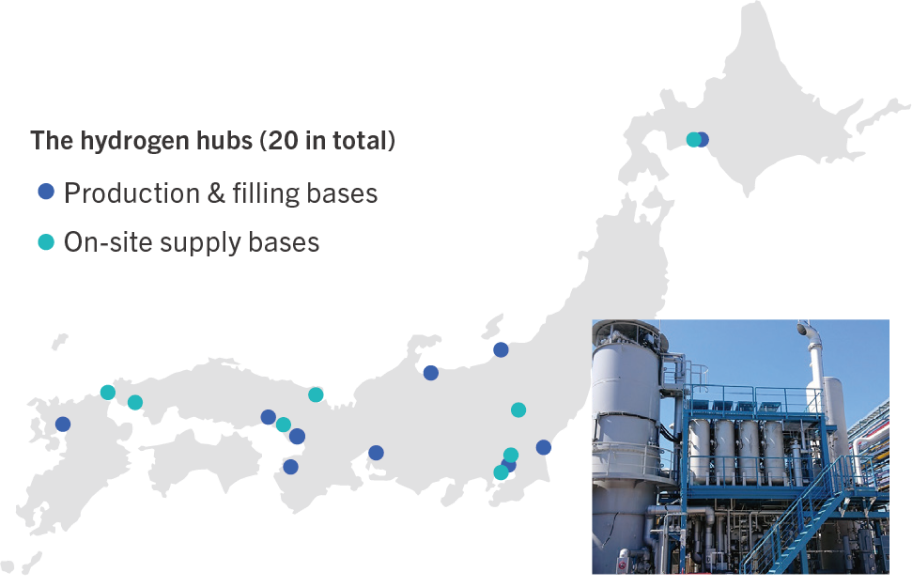
Hydrogen gas generator “VHR”
Producing CO2-free hydrogen
1) Clean hydrogen energy from “cattle manure”
In April 2022, we launched Japan’s only hydrogen production and supply business using carbon-neutral biogas derived from livestock manure in the town of Shikaoi, Hokkaido. To encourage the use of hydrogen as well, the town and local companies introduced fuel cell vehicles running on hydrogen derived from dairy cow manure.

Shikaoi Hydrogen Farm Co.
2) CO2-free hydrogen from unused natural gas by DMR method
As adopted by the New Energy and Industrial Technology Development Organization (NEDO), we have started a hydrogen production demonstration in Toyotomi Town, Hokkaido, using the direct methane reforming (DMR)* method to generate hydrogen from methane-based natural gas associated with hot springs, without emitting CO2 directly.
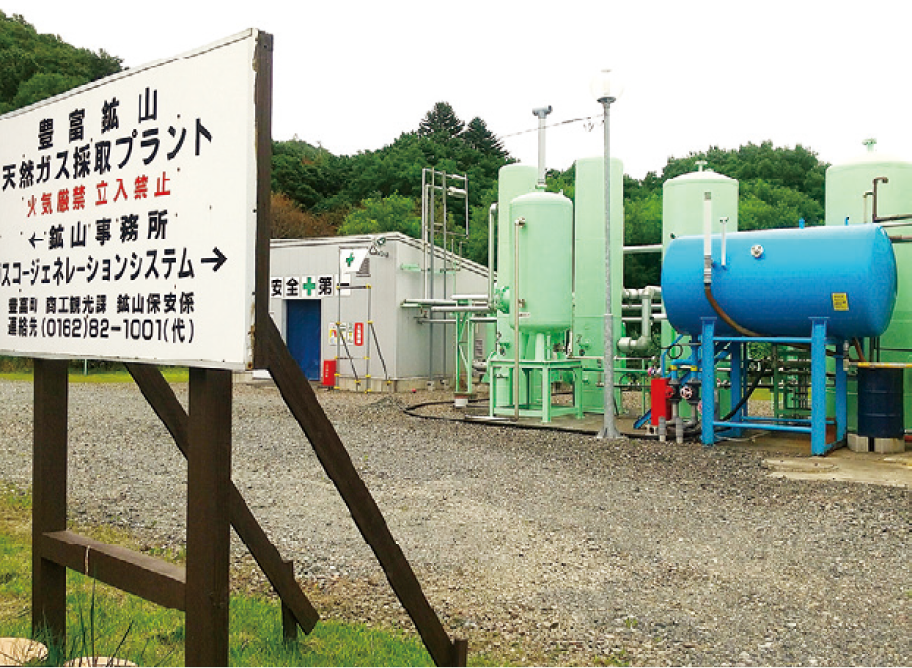
Natural gas extraction plant in Toyotomi
* DMR is a clean reaction that uses methane to generate hydrogen and solid carbon, such as carbon nanotubes, with an iron-based catalyst. A new production method that can produce so-called turquoise hydrogen is currently under development with TODA KOGYO CORP.
